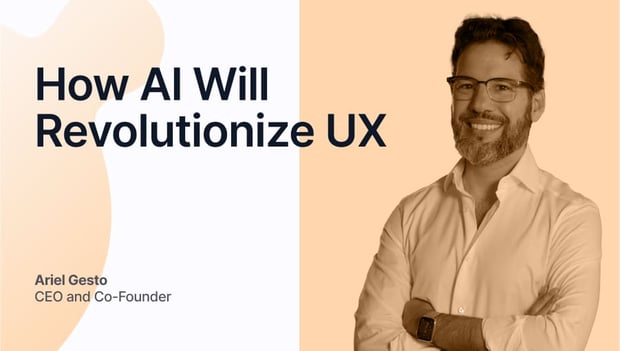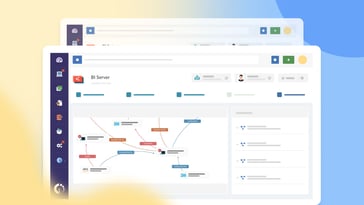Artificial intelligence (AI) has been a part of technological innovation since the 1950s, but recent advances in large language models (LLMs) have accelerated its impact. These advancements have sparked widespread excitement, but many are missing the real disruption on the horizon: user experience (UX).
As a company deeply rooted in UX innovation, we at InvGate are closely examining how this evolution will unfold.
A brief look back
The journey of AI in enterprise applications has been incremental but impactful. Pre-LLM capabilities in IT Service Management included functionalities like ticket routing and enhanced search algorithms. While powerful, these tools operated within predefined boundaries, solving specific problems without fundamentally changing how users interact with systems.
The introduction of LLMs has ushered in a new era of possibilities, unlocking three waves of AI-driven innovation that will transform UX across industries.

The three waves of AI capabilities
1st wave: Text-based augmentation
The first wave is characterized by enhancements in text-based interactions. With LLMs, organizations gained access to capabilities like:
- Summarization: Automating concise reports and ticket updates.
- Expansion: Enhancing communication clarity by generating detailed explanations.
- Tone adjustments: Aligning messaging to match the intended sentiment.
- Knowledge base article creation: Automating documentation and information sharing.
These features are largely self-contained within textual contexts, providing immediate efficiencies but leaving broader possibilities untapped.
2nd wave: Augmented (self-contained) systems
The second wave emerges when LLMs are integrated with existing enterprise systems. This layer of innovation brings three critical focus areas:
- Agent augmentation: AI-driven tools recommend solutions, identify relevant collaborators, and highlight similar tickets, empowering agents with actionable insights.
- Employee service: Conversational AI agents leverage knowledge bases and historical ticket data to deliver accurate and personalized responses to employees.
- Business continuity: Machine intelligence detects early warning signs, identifying potential problems before they escalate into major incidents.
Additionally, early-stage innovations in data manipulation are proving transformative. For example, our Asset Management solution now enables users to query product data in natural language, offering unprecedented accessibility and efficiency.
3rd wave: Metadata-infused capabilities (across systems)
The third wave represents a profound leap: systems leveraging metadata to go beyond automation into resolution and prevention. Consider the following:
- Ticket deflection: AI pulls data from disparate systems to compose answers proactively, often resolving inquiries before they escalate into incidents.
- Ticket resolution: Metadata-driven AI agents can resolve issues by referencing knowledge bases and previous resolutions, performing tasks traditionally handled by humans across different systems from different vendors.
This wave is already in motion, but it faces significant hurdles — most notably, the lack of standardized protocols for metadata sharing.
Giants like Salesforce and Microsoft are debating the future of Agentic AI, with no consensus on whether these systems will operate in open or closed ecosystems. The coming "metadata wars" will shape the trajectory of AI integration for years to come.
The future: A new UX paradigm
To appreciate the magnitude of this transformation, we must look to history. In the early days of computing, user interaction revolved around punch cards and command-line interfaces. The advent of graphical user interfaces (GUIs) in the 1980s revolutionized accessibility, allowing users to interact with technology through more intuitive point-and-click methods. You didn’t need to find a .exe file to run a software any more.
Since then, and over the last four decades, UX advancements have largely refined the GUI model. But LLMs are poised to disrupt this paradigm, bringing us into an era where natural language becomes the primary mode of interaction. This shift is already visible in:
- Photography: Editing via prompts.
- Video: Content adjustments driven by natural language commands.
- Data: Querying and manipulating information using conversational prompts.
Voice, the most natural human interaction, will play a pivotal role in this transformation. People will ask for and deliver services through spoken or written natural language, shifting the UX landscape in profound ways. Talking to technology will become the “new normal”. There’s a whole set of considerations we need to look into in terms of accessibility if this will be the new paradigm, but that’s too important a topic and it deserves a separate discussion.
GUIs won’t disappear entirely — just as command lines remain essential for certain tasks — but natural language interfaces will redefine how we engage with technology.

Preparing for the UX revolution
As we navigate this rapidly evolving landscape, businesses must prioritize adaptability. The integration of AI and UX will not only accelerate operations but also set new standards for how users interact with systems and services.
At InvGate, we are committed to being at the forefront of this revolution, leveraging AI to create experiences that are intuitive, efficient, and transformative.
The future of UX is coming. The question is: Are you ready to embrace it?















